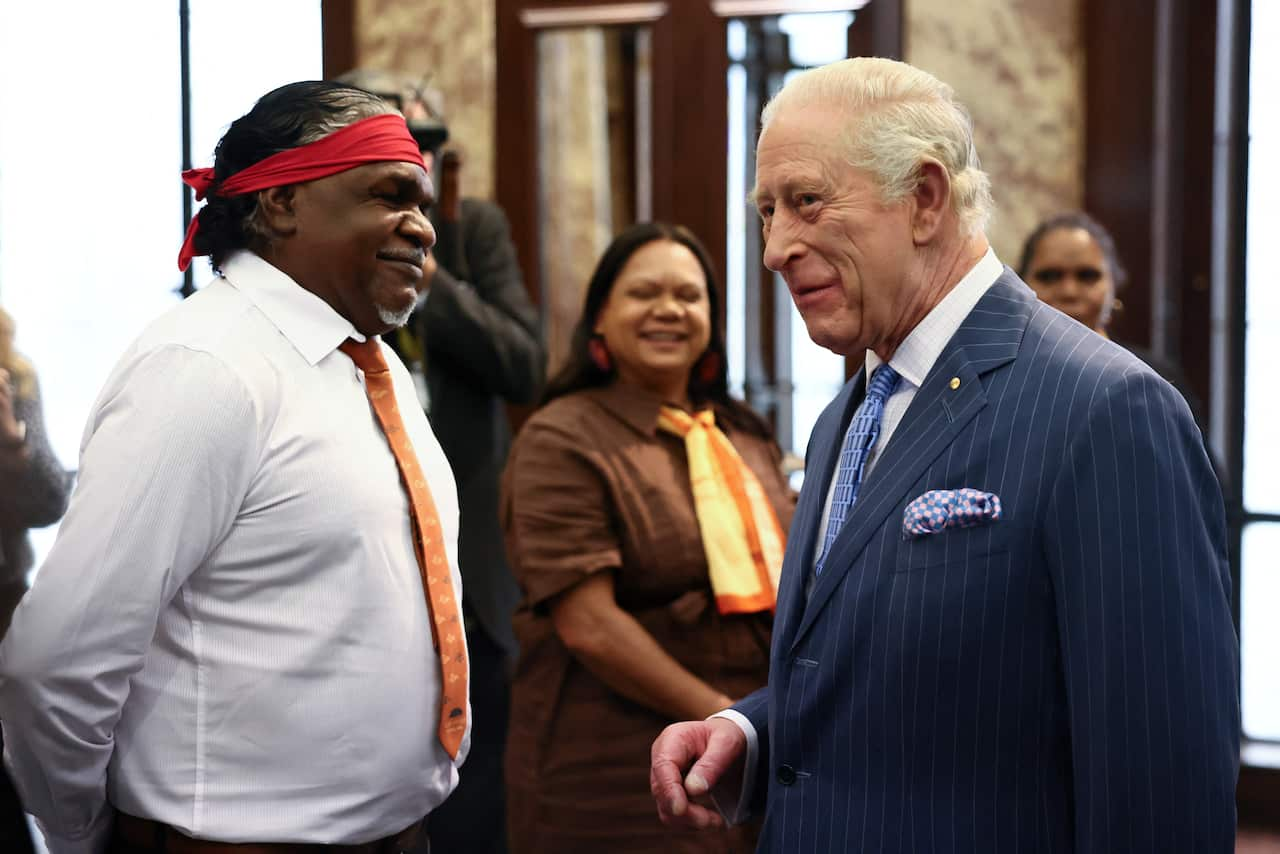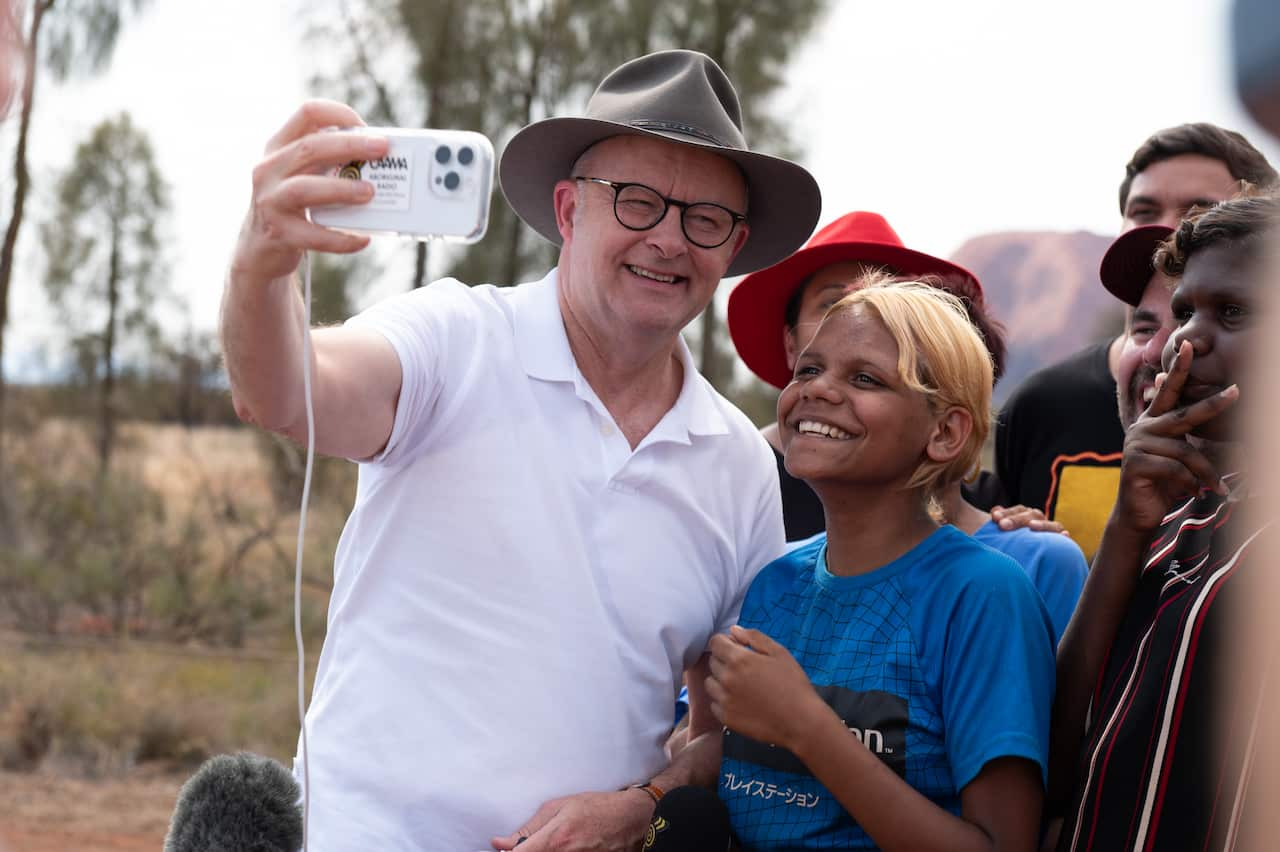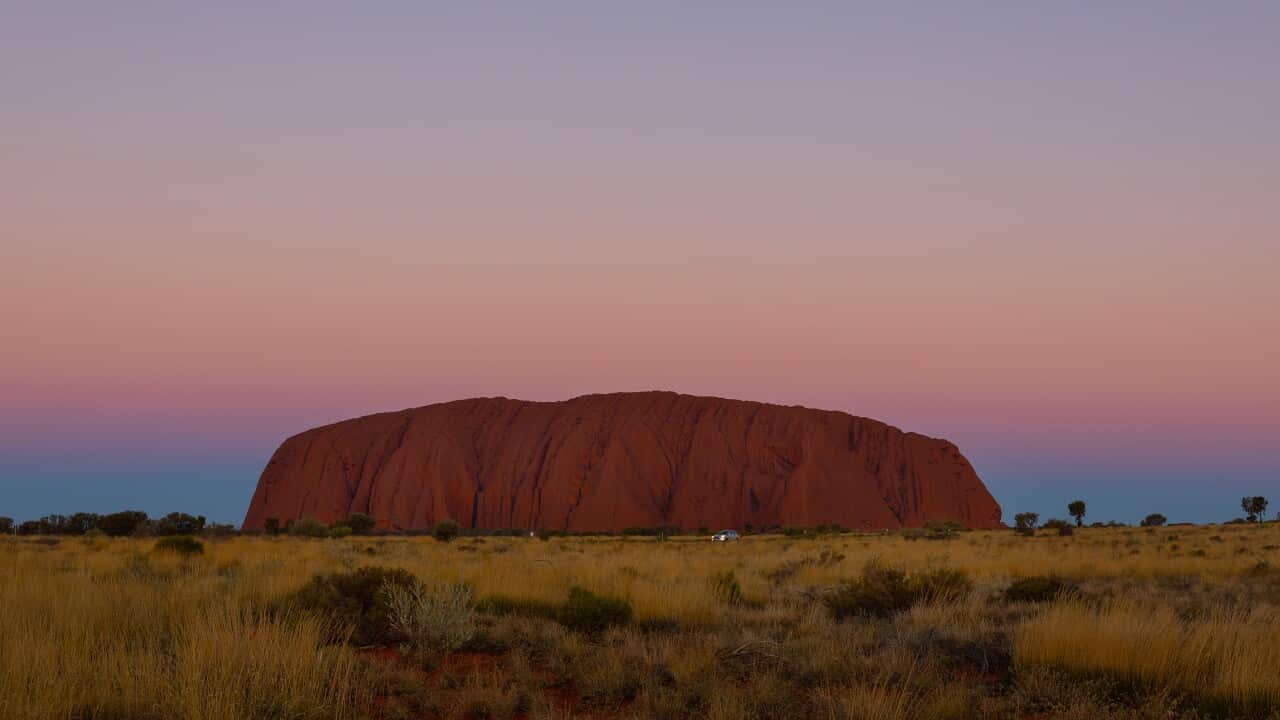Anangu traditional owners have marked 40 years since Uluru Kata Tjuta National Park was handed back to their people.
The handback on 26 October 1985 was a landmark moment for Aboriginal land rights in Australia and a powerful recognition of the enduring connection between First Nations peoples and Country.
Uluru and Kata Tjuta are some of central Australia's most iconic landscapes, included in the UNESCO World Heritage List, and have been sacred sites of the Anangu people for millennia.
They had been known by other names for decades, after European explorers renamed Kata Tjuta as Mount Olga, and Uluru as Ayers Rock, after South Australia’s Chief Secretary Sir Henry Ayers.
Celebrations kick-off
The official celebrations have included a trip to London for a delegation of nine Anangu traditional owners, who met with High Commissioner to the UK Stephen Smith, and King Charles, as part of the official commemorations.

King Charles met with Anangu traditional owners at the Australian High Commission in London on Thursday. Source: PA / Jack Taylor
Thunderstorms played out for hours at Uluru early on Saturday, with heavy rain soaking the rock and creating waterfalls down its sides before the sky cleared during the morning.
At Uluru-Kata Tjuta National Park, Albanese told reporters it was a great honour to be the first prime minister to attend a celebration of the handback of a symbol that signified Australia around the world.
It was an "extraordinary place of beauty and spiritual significance for the Anangu people" but anyone who visited felt the significance of a very sacred place, he said.

Prime Minister Anthony Albanese takes a selfie with Mutitjulu school student Annalisha Buzzacott at Uluru on Saturday. Source: AAP / Sara Maiorino
Anangu woman Alison Milyika Carroll remembers attending the event with her father when in her 20s and seeing the title deeds handed over to male and female elders.
"This rock belongs to Anangu and is for everybody," she told reporters at Uluru.
"We love people coming here from all over to walk around and see it.
"They enjoy it, to see this amazing rock."
Celebratory events being held on Saturday at Uluru's sunrise viewing site include traditional dance performances, a concert featuring local and national musicians, an art exhibition and arts and crafts stalls.
Mostyn will unveil a plaque commemorating the 40th anniversary of the handback on Sunday.
Historic handover
In 1985, the traditional owners of Uluru found themselves at the centre of a historic moment, announced by then Governor-General Sir Ninian Stephen.
The handback was a landmark moment for Aboriginal land rights in Australia and a powerful recognition of the enduring connection between First Nations peoples and Country.
It was the result of years of lobbying by the Central Land Council and Pitjantjatjara Council to recognise the rights of traditional owners, something the Northern Territory government had consistently resisted.
In 1985, Chief Minister Ian Tuxsworth argued that the territory government should have control, and that the commissioner of the territory's land court should decide on ownership, even though Uluru had been excluded from the Territory's Aboriginal Land Rights Act when it was declared the Uluru–Kata Tjuta National Park in 1977.
"That commissioner has already determined that Uluru is not available for claim, and he's also not made any determination that there ARE traditional owners to the Uluru area," he said at the time.
"Now until those things are settled we are saying that the Aboriginal Land Rights Act has been subverted and changed for political convenience."
The territory government had accordingly lobbied for the title to be transferred to them, which the National Museum of Australia says would have resulted in a reduced title for the Anangu and no control in park management.
The Hawke government and governor-general believed otherwise.
Stephen said that would be rectified by the handback, and an agreement for the traditional owners to lease the park back to the government.
"The trust by the deed which is to be handed over today acquires inalienable Australian law to this place, which is so special to its members," he said.
"And at the same time, recognising the special significance of Uluru to all Australians, and the appropriateness of it remaining as an Australian national park, the Trust will today lease it back to the Australian National Parks and Wildlife Service as a national park."
Uluru is included in the UNESCO World Heritage List and is one of the most recognisable natural sites in the world.
Millions of people visit every year, making it one of Australia's most popular tourist sites.
— With additional reporting by Australian Associated Press
Share



